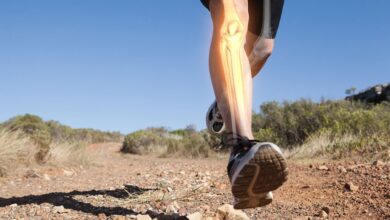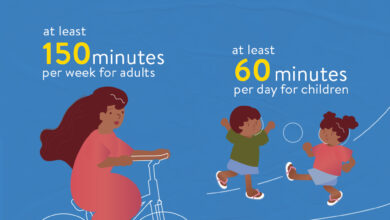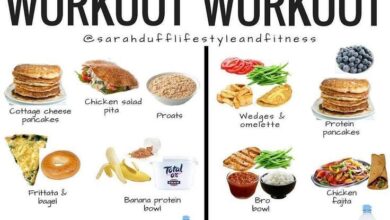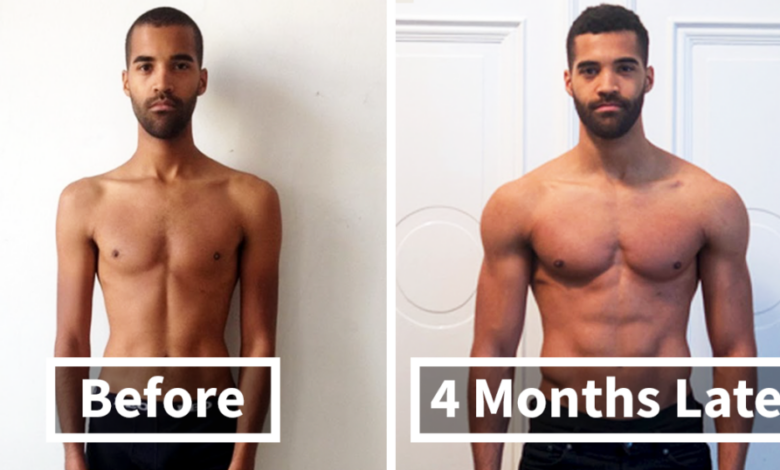
8 Things to Do Before and After a Workout for Better Results
8 things to do before and after a workout to get better results – Want to maximize your workout gains and see faster results? It’s not just about the sweat session itself, but also the preparation before and the recovery afterward. Think of it like a sandwich – the bread is just as important as the filling! This is where the 8 things we’ll discuss come in.
These tips are designed to help you fuel your body, prepare your mind, and recover properly, so you can reach your fitness goals faster and more efficiently.
We’ll cover everything from warming up and cool downs, to proper nutrition, hydration, and even the importance of sleep and mental preparation. By incorporating these strategies into your fitness routine, you’ll be surprised at the difference it makes in your overall performance and well-being.
Pre-Workout Preparation

A well-structured pre-workout routine is crucial for optimizing your workout performance and minimizing the risk of injuries. It primes your body for the physical demands ahead, enhancing your overall fitness journey.
Dynamic Stretching
Dynamic stretches involve controlled movements that mimic the actions of your workout. These stretches improve flexibility, range of motion, and blood flow to your muscles, preparing them for exertion.
- Arm Circles:Stand with your feet shoulder-width apart. Extend your arms to the sides and rotate them forward and backward in a circular motion for 10-15 repetitions. This warms up your shoulders, upper back, and chest muscles.
- Leg Swings:Stand with your feet hip-width apart. Swing one leg forward and backward, maintaining a controlled motion. Repeat with the other leg for 10-15 repetitions on each side. This dynamic stretch targets your hip flexors, hamstrings, and quadriceps.
- High Knees:Stand with your feet shoulder-width apart. Bring your knees up towards your chest as you run in place. This activates your core, glutes, and leg muscles.
- Butt Kicks:Stand with your feet shoulder-width apart. Bring your heels up towards your glutes as you run in place. This stretch targets your hamstrings and glutes.
- Torso Twists:Stand with your feet shoulder-width apart. Rotate your upper body from side to side, engaging your core muscles. This improves flexibility and mobility in your spine.
Light Cardio
Engaging in light cardio before your workout elevates your heart rate and warms up your muscles, preparing them for more intense activity.
Optimizing your workout routine goes beyond just hitting the gym. It’s about prepping your body beforehand with a proper warm-up and fueling it afterwards with a healthy snack. But don’t underestimate the power of a good walk, too! Check out these 7 reasons you need to walk 2 miles a day for a boost in energy and overall well-being.
Walking is a great way to improve your cardiovascular health, which is crucial for a successful workout routine. So, remember to incorporate a walk into your daily routine, whether it’s before or after your workout, for even better results.
- Walking:A brisk walk for 5-10 minutes can effectively raise your body temperature and improve blood circulation. This prepares your body for the workout ahead.
- Jogging:A light jog for 5-10 minutes can further elevate your heart rate and warm up your leg muscles. This is particularly beneficial for runners and individuals participating in high-impact workouts.
- Jumping Jacks:This classic exercise effectively increases your heart rate and warms up your muscles, making it a suitable choice for pre-workout preparation.
Hydration
Proper hydration is crucial before, during, and after your workout. It helps regulate body temperature, lubricates joints, and transports nutrients to your muscles.
“Aim to drink 16-20 ounces of water two hours before your workout and 8 ounces of water 15-30 minutes before you begin.”
Fueling Your Body
You’ve prepared your mind for the workout, now it’s time to fuel your body for optimal performance. Eating the right foods before a workout provides your muscles with the energy they need to power through your session and recover efficiently.
Pre-Workout Nutrition: Importance and Benefits
A well-timed and balanced pre-workout meal or snack is crucial for maximizing your workout benefits. By providing your body with the right fuel, you can:
- Enhance energy levels:Carbohydrates are the primary source of energy for your muscles during exercise. Consuming adequate carbohydrates before your workout ensures you have enough fuel to push through your routine.
- Promote muscle recovery:Protein is essential for muscle repair and growth. Eating a small amount of protein before your workout can aid in muscle recovery after your session.
- Improve focus and concentration:A balanced pre-workout meal can help stabilize blood sugar levels, preventing energy crashes and promoting mental clarity during your workout.
- Reduce fatigue and muscle soreness:Adequate pre-workout nutrition can help prevent fatigue and reduce post-workout muscle soreness, allowing you to train harder and recover faster.
Pre-Workout Snack Examples
Here are some healthy and energizing pre-workout snack ideas:
- Fruit and Yogurt:A combination of fruit like a banana or berries with yogurt provides a blend of carbohydrates and protein for sustained energy.
- Oatmeal with Berries:Oatmeal is a complex carbohydrate that releases energy gradually, while berries provide antioxidants and fiber.
- Whole-Wheat Toast with Peanut Butter:This provides a combination of complex carbohydrates, protein, and healthy fats for sustained energy and muscle support.
- Trail Mix:A mix of nuts, seeds, and dried fruit offers a balanced mix of carbohydrates, protein, and healthy fats for sustained energy and essential nutrients.
The Role of Macronutrients, 8 things to do before and after a workout to get better results
Each macronutrient plays a crucial role in your pre-workout meal:
Carbohydrates
Carbohydrates are your body’s primary energy source during exercise. They are broken down into glucose, which is used by your muscles for fuel. Aim for complex carbohydrates like whole grains, fruits, and vegetables, which provide sustained energy release compared to simple sugars.
Protein
Protein is essential for muscle repair and growth. While your body primarily uses carbohydrates for energy during exercise, protein plays a crucial role in post-workout recovery. Consuming a small amount of protein before your workout can aid in muscle repair and growth.
Healthy Fats
Healthy fats, like those found in nuts, seeds, and avocados, provide sustained energy and help your body absorb vitamins. While they are not the primary energy source during exercise, they can contribute to overall energy levels and support muscle recovery.
Timing Your Pre-Workout Meal
The timing of your pre-workout meal is just as important as its composition. Aim to eat a meal or snack about 1-2 hours before your workout to allow for proper digestion. Eating too close to your workout can lead to digestive discomfort, while eating too far in advance can leave you feeling sluggish.
Want to maximize your workout gains? It’s not just about the reps and sets, but also about the fuel you put in your body. Think of it as a two-pronged approach: pre-workout prep and post-workout recovery. And, let’s be honest, fueling your body doesn’t just mean protein shakes.
It’s also about making sure you’re getting enough vitamins and minerals, and that’s where vegetables come in. Check out these 5 ways to up your vegetable game to ensure you’re getting the nutrients you need to support your workout routine.
So, you’ve got your pre- and post-workout routines dialed in, now it’s time to focus on the right fuel to power your body through those gains!
Post-Workout Recovery
Your workout is only half the battle. Proper post-workout recovery is crucial for maximizing results, preventing injuries, and ensuring you’re ready for your next training session. This involves more than just grabbing a protein shake and heading home.
From proper warm-ups and cool-downs to mindful hydration and post-workout recovery, there’s a lot you can do to maximize your workout gains. And while consistent exercise is key, strategically adjusting your calorie intake can be a game-changer, especially if you’re an athlete aiming to shed some pounds.
Check out this article on calorie cutting for athletes looking to lose weight for some helpful tips. By combining smart nutrition choices with a solid workout routine, you’ll be well on your way to reaching your fitness goals.
Let’s delve into the essential steps for effective post-workout recovery.
Cooling Down
Cooling down after a workout is often overlooked but is just as important as the warm-up. It helps your body transition back to a resting state, preventing dizziness and promoting muscle recovery. A proper cool-down should consist of 5-10 minutes of light cardio, followed by static stretches.
Static Stretching
Static stretches involve holding a stretch for a specific duration, typically 15-30 seconds. They help increase flexibility, reduce muscle soreness, and improve range of motion. Here are some effective static stretches to incorporate after your workout:
- Hamstring Stretch:Sit on the floor with your legs extended in front of you. Reach towards your toes, keeping your back straight.
- Quadriceps Stretch:Stand upright and grab your right foot with your right hand. Pull your heel towards your buttocks until you feel a stretch in your quadriceps.
- Calf Stretch:Stand facing a wall with your feet shoulder-width apart. Lean forward, keeping your back straight, until you feel a stretch in your calves.
- Chest Stretch:Interlock your fingers behind your back and lift your arms up. Push your chest forward and hold.
- Triceps Stretch:Reach your right arm across your body and grab your right elbow with your left hand. Pull your elbow towards your left shoulder until you feel a stretch in your triceps.
- Shoulder Stretch:Reach your right arm across your body and grab your right elbow with your left hand. Pull your elbow towards your left shoulder until you feel a stretch in your triceps.
Light Cardio
Light cardio after a workout helps flush out metabolic waste products, improve blood circulation, and reduce muscle soreness. Examples of light cardio you can do include:
- Walking
- Cycling at a low intensity
- Swimming
Hydration
Hydration is crucial for recovery, as it helps replenish fluids lost during exercise and supports muscle repair. Here are some tips for proper hydration after exercise:
- Drink water throughout the day, not just after your workout.
- Choose water over sugary drinks, which can dehydrate you.
- Consider consuming electrolyte drinks, especially after intense workouts, to replenish electrolytes lost through sweat.
Consistency and Progress Tracking: 8 Things To Do Before And After A Workout To Get Better Results
Consistency is the cornerstone of achieving any fitness goal. Whether you’re aiming to build muscle, lose weight, or simply improve your overall fitness, showing up consistently is crucial for seeing results. It’s not about hitting the gym every day or following a strict diet religiously.
It’s about finding a sustainable routine that you can stick with over the long term.
Tracking Progress and Staying Motivated
Tracking your progress can be incredibly motivating and help you stay on track. It allows you to see how far you’ve come and identify areas where you can improve. You can track your progress in various ways, including:
- Weight and Body Fat Percentage:These measurements can give you an idea of your overall progress, but it’s important to remember that they are just one piece of the puzzle.
- Progress Photos:Taking progress photos every few weeks can help you visualize your progress and notice subtle changes that you might not otherwise see.
- Workout Logs:Keep track of your workouts, including the exercises you perform, the weight you lift, and the number of repetitions. This can help you identify patterns and track your progress over time.
- Fitness Apps:There are many fitness apps available that can help you track your progress, set goals, and stay motivated.
Seeking Professional Guidance
Seeking guidance from a certified personal trainer or fitness expert can be incredibly beneficial. A qualified professional can help you create a personalized workout plan, provide feedback on your form, and motivate you to stay on track. They can also help you identify any potential risks or injuries and offer strategies for overcoming them.
Listening to Your Body
It’s important to listen to your body and adjust your workout routine as needed. If you’re feeling tired or sore, take a rest day or modify your workout. Don’t push yourself too hard, as this can lead to injury.
Conclusion
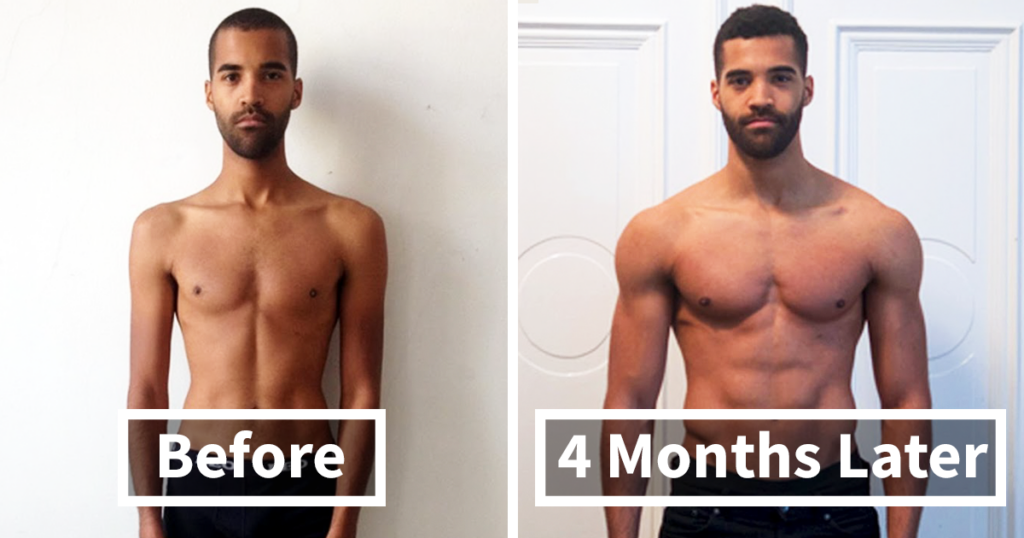
By taking the time to focus on your pre-workout preparation and post-workout recovery, you’re not just treating your body like a machine, but as a finely tuned instrument. With the right approach, you can unlock its full potential and achieve results you never thought possible.
So, whether you’re a seasoned athlete or just starting your fitness journey, remember that the journey to success is paved with smart choices and a little bit of planning.


